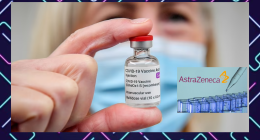Warning Signs That Your Hemorrhoids Need Medical Treatment
Rectal bleeding is a common sign of hemorrhoids, but it could signify something much more severe than piles, such as colon cancer.
It is not uncommon for people to make and hear jokes on hemorrhoids or piles, the health condition marked by inflammation and swelling in the anal and rectum tissues. One in every four people has the potential of getting piles. If you are one of them or if any of your closed ones had piles, you know that they are not funny.
Hemorrhoids are relatively common in the age group of 40-75. In most cases, the symptoms associated are mild and can be treated with over-the-counter remedies alone. But there can be times when medical treatment becomes extremely important. According to the National Institute of Diabetes and Digestive and Kidney Diseases, 1.1 million have sought medical treatment on an outpatient basis for piles in 2009. In 2010, more than 2 lakh people had to be hospitalized for hemorrhoids treatment. Piles do not cause life-threatening complications, but it is always healthy to receive medical treatment as early as possible. But to avail of the necessary treatment at the right time, it is essential to understand and identify the warning signs of hemorrhoids.
Warning signs that you need to see a doctor for your hemorrhoids
If you see Rectal Bleeding
If you feel a lump in your anus or experience rectal bleeding or pain in the rectum, you should consult with a proctologist. Rectal bleeding is a common sign of hemorrhoids, but it could signify something much more severe than piles, such as colon cancer. There is a very thin line of difference between bleeding from the rectum induced by piles and bleeding caused by hemorrhoids. Consulting with a doctor is vital to decide the best line of treatment.
If your hemorrhoids cause Constant Pain
If your hemorrhoids cause constant pain and discomfort, it is time that you keep the home remedies aside and resort to medical treatment. Home remedies may help manage the pain and discomfort of piles at the initial stage. But if the pain constantly prevails or grows sever with time, relying on those remedies itself will not work. It can lead the piles to grow severe and make your health worse over time.
If your Stool Looks Maroon or tarry in color
This is a sign of internal bleeding. It might not appear as drops of blood on the tissue paper. But if your stool changes color, appears dark red, maroon, or tarry in color, you should check with a proctologist. If this condition is accompanied by dizziness and faintness, you might even require emergency medical care.
You are trying Home Remedies, but the anal lump is Growing Bigger
If the lump in your rectal area is continuously growing in size in spite of taking home remedies, it clearly means that the home remedies are not proving beneficial enough for your hemorrhoids. You should consult with an anorectal doctor or a piles specialist without further delay in such a case.
According to a senior proctologist at Pristyn Care, “If there is a lump in the anus, bleeding from the rectum, or you have trouble passing a bowel movement, you should immediately check with a doctor before the symptoms turn serious. However, if your symptoms persist for longer than what you expect, a visit to the doctor should make sense for you.”He further adds, “Medical treatment is important. But keeping a check on your fiber intake and daily water consumption plays an equally significant role. So, along with the medical treatment that the doctor suggests, one should continue taking sitz baths, have a fiber-rich diet, and check with the doctor regularly.”
Medical Treatments for Piles
Medical treatment for piles may include both surgical and non-surgical treatments that a proctologist suggests.
Non-surgical treatments for piles
- Medicines – If your symptoms are not going curbed with home remedies, the doctor may recommend taking medications such painkillers, laxatives, ointments, and corticosteroids. These medicines may help reduce the swelling of the anal area and aid in having a more effortless bowel movement.
- Coagulation– This non-surgical procedure is used to treat piles of small and medium sizes. The surgeon uses a beam of infrared light to destroy the piles. The treatment is only used for internal hemorrhoids where home remedies do not provide relief.
- Rubber-band ligation – This non-invasive treatment is a widespread practice. This procedure is used to treat internal piles where the anorectal surgeon places a rubber band around the base of the internal piles. The rubber band cuts off the blood circulation to the piles tissues causing it to shrink and fall within 5-7 days.
If the condition of the hemorrhoids grows to the extent that non-surgical methods don’t work, the doctor may find it best to treat it with a surgical procedure. Effective surgical procedure for piles treatment include:
Surgical piles treatment
- Hemorrhoidectomy – Hemorrhoidectomy is done to remove the anal tissues that cause bleeding. This procedure is mostly used to treat piles of severe grades or piles where the anal tissues protrude. The surgery can be performed under general or local anesthesia. In this procedure, the surgeon makes a few incisions around the hemorrhoidal tissue. Next, the swollen veins inside the hemorrhoids are tied off to prevent bleeding and then the hemorrhoid is removed. This is the most conventional and commonly performed piles surgery.
- Laser surgery – Laser surgery is a relatively newer form of surgical treatment for piles. This treatment for hemorrhoids is the outcome of constant medical developments; advanced, safer, and more effective than any methods till date. A laser beam is used in this procedure to cut off and shrink the hemorrhoid tissues. The precisely focussed narrow beam of light disrupts the blood flow to the tissues and destroys them. This process is non-invasive, causes no bleeding from the surgical site, and ensures recovery within the shortest time possible.
Sooner the treatment, the better the results. Waiting for symptoms to get so severe that it warrants a doctor visit is not a good decision. Everyone must understand that treatment and prevention are unsustainable without one another.
This post first appeared on The Health Site






